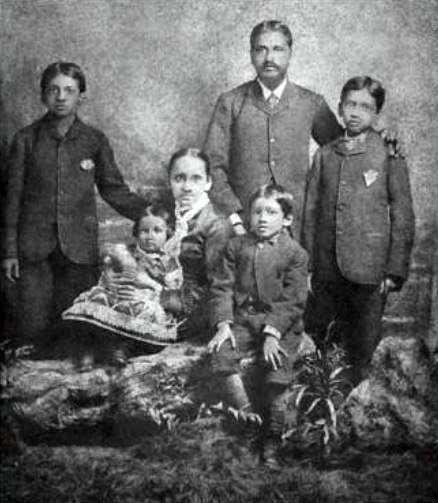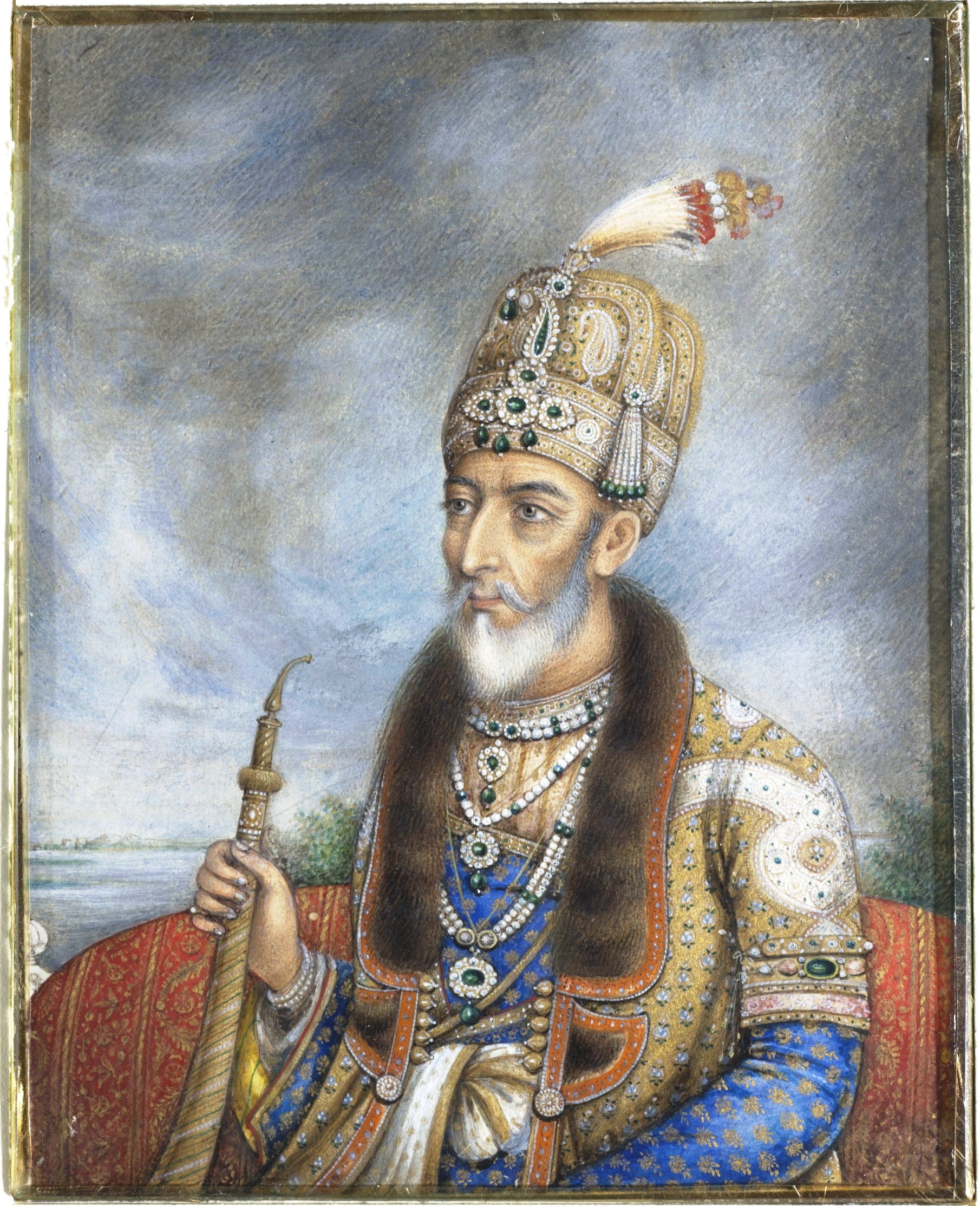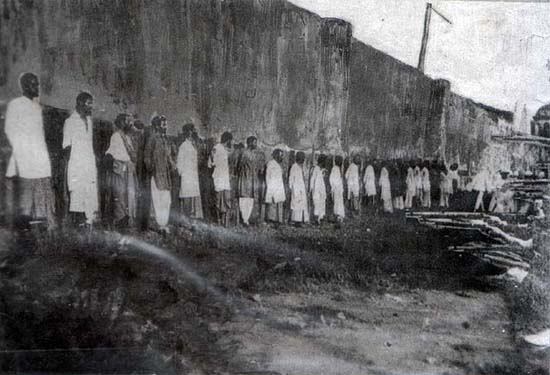|
Satyendranath Basu
Satyendra Nath Bosu (aka. Satyendranath Bose or Satyen Bose; 30 July 1882 – 21 November 1908) was an Indian Revolutionary movement for Indian independence, nationalist of the Anushilan Samiti. Bosu, while held in Alipore Jail hospital as an under-trial in the Alipore Bomb Case, shot dead the Crown witness Narendranath Goswami with the help of fellow prisoner Kanailal Dutta, leading to the collapse of the case against prime suspect Aurobindo. Bosu gave himself up on the jail premises and was subsequently put on trial. Along with Dutta, he was found guilty and executed by hanging on 21 November 1908 for the murder of Goswami. Early life Satyendranath was born on 30 July 1882 in Midnapore district (presently Paschim Midnapore) of West Bengal, India. His father, Abhaya Charan Bosu, was a professor in Midnapur College. Around 1850, he settled at Midnapur, which became the residence of Satyendranath's family. Abhaya Charan had five sons (Jnanendra Nath, Satyendra Nath, Bhupend ... [...More Info...] [...Related Items...] OR: [Wikipedia] [Google] [Baidu] |
Midnapore District
Midnapore (Pron: mad̪aːniːpur), or sometimes Medinipur, is a former district in the Indian state of West Bengal, headquartered in Midnapore. On 1 January 2002, the district was bifurcated into two separate districts namely Purba Medinipur and Paschim Medinipur. It was the largest district of West Bengal by area and population at the time of bifurcation. Etymology There are conflicting accounts of how the name Medinipur came to be. One account claims that Medinipur was named after a local deity "Medinimata" (literally "mother of the world", a Shakti incarnation). According to Sri Hari Sadhan Das, the district got its name from "Medinikar", the founder of the city in 1238, who was the son of "Prankara", the feudal king of "Gondichadesh". He was also the writer of "Medinikosh". Hara Prasad Shastri thinks that the city Medinikar established it around the time he wrote the book (1200-1431). He is said to have built the fort called "Kornelgola" situated in the city. History Me ... [...More Info...] [...Related Items...] OR: [Wikipedia] [Google] [Baidu] |
Shri Aurobindo
Sri Aurobindo (born Aurobindo Ghose; 15 August 1872 – 5 December 1950) was an Indian yogi, maharishi, and Indian nationalist. He also edited the newspaper ''Bande Mataram''. Aurobindo studied for the Indian Civil Service at King's College, in Cambridge, England. After returning to India, he took up various civil service works under the Maharaja of the princely state of Baroda. He became increasingly involved in nationalist politics in the Indian National Congress and the nascent revolutionary movement in Bengal with the Anushilan Samiti. He was arrested in the aftermath of a number of bombings linked to his organization in a public trial where he faced charges of treason for Alipore Conspiracy and then released, after which he moved to Pondicherry and developed a spiritual practice he called Integral Yoga. He wrote ''The Life Divine'', which deals with the philosophical aspect of Integral Yoga and ''Synthesis of Yoga'', which deals with the principles and methods of ... [...More Info...] [...Related Items...] OR: [Wikipedia] [Google] [Baidu] |
Indian Nationalism
Indian nationalism is an instance of civic nationalism. It is inclusive of all of the people of India, Composite nationalism (India), despite their Demographics of India, diverse ethnic, linguistic and religious backgrounds. Indian nationalism can trace roots to pre-colonial India, but was fully developed during the Indian independence movement which campaigned against British Raj, British rule. Indian nationalism quickly rose to popularity in India through these united anti-colonial coalitions and movements. Independence movement figures like Mahatma Gandhi, Subhas Chandra Bose, and Jawaharlal Nehru spearheaded the Indian nationalist movement. After Independence Day (India), Indian Independence, Prime Minister Nehru and his successors continued to campaign on Indian nationalism in face of border wars with both Sino-Indian War, China and Indo-Pakistani wars and conflicts, Pakistan. After the Indo-Pakistani War of 1971, Indo-Pakistan War of 1971 and the Bangladesh Liberation ... [...More Info...] [...Related Items...] OR: [Wikipedia] [Google] [Baidu] |
Indian Independence Movement
The Indian independence movement was a series of historic events in South Asia with the ultimate aim of ending British Raj, British colonial rule. It lasted until 1947, when the Indian Independence Act 1947 was passed. The first nationalistic movement took root in the newly formed Indian National Congress with prominent moderate leaders seeking the right to appear for Indian Civil Service examinations in British India, as well as more economic rights for natives. The first half of the 20th century saw a more radical approach towards self-rule. The stages of the independence struggle in the 1920s were characterised by the leadership of Mahatma Gandhi and Congress's adoption of Gandhi's policy of non-violence and Salt March, civil disobedience. Some of the leading followers of Gandhi's ideology were Jawaharlal Nehru, Vallabhbhai Patel, Abdul Ghaffar Khan, Maulana Azad, and others. Intellectuals such as Rabindranath Tagore, Subramania Bharati, and Bankim Chandra Chattopadhyay spr ... [...More Info...] [...Related Items...] OR: [Wikipedia] [Google] [Baidu] |
Revolutionary Movement For Indian Independence
The Revolutionary movement for Indian Independence was part of the Indian independence movement comprising the actions of violent underground revolutionary factions. Groups believing in armed revolution against the ruling British fall into this category, as opposed to the generally peaceful civil disobedience movement spearheaded by Mahatma Gandhi. The revolutionary groups were mainly concentrated in Bengal Presidency, Bengal, Bombay Presidency, Bombay, Bihar Province, Bihar, the United Provinces of Agra and Oudh, United Provinces and Punjab Province (British India), Punjab. More groups were scattered across British Raj, India. Beginnings Apart from a few stray incidents, the armed rebellion against the British rulers was not organized before the beginning of the 20th century. The revolutionary philosophies and movement made their presence felt during the 1905 Partition of Bengal (1905), partition of Bengal. Arguably, the initial steps to organise the revolutionaries were take ... [...More Info...] [...Related Items...] OR: [Wikipedia] [Google] [Baidu] |
Khudiram Bose
Khudiram Bose (also spelled ''Khudiram Basu'') (3 December 1889 – 11 August 1908) was an Indian nationalist from Bengal Presidency who opposed British rule of India. For his role in the Muzaffarpur Conspiracy Case, along with Prafulla Chaki, he was sentenced to death, for the attempted assassination of a British judge, Magistrate Douglas Kingsford, by throwing bombs on the carriage they suspected the man was in. Magistrate Kingsford, however, was seated in a different carriage, and the throwing of bombs resulted in the deaths of two British women. Prafulla fatally shot himself before the arrest. Khudiram was arrested and trialed for the murder of the two women, ultimately being sentenced to death. He was one of the first Indian revolutionaries in Bengal to be executed by the British. At the time of his hanging, Khudiram was 18 years, 8 months, and 8 days, 10 hours old making him the second youngest revolutionary in India to be hanged. Mahatma Gandhi, however, denounc ... [...More Info...] [...Related Items...] OR: [Wikipedia] [Google] [Baidu] |
Prafulla Chaki
Prafulla Chandra Chaki (, ''Prafulla Chaki'' alias Dinesh Chandra Roy) (10 December 1888 – 2 May 1908) was an Indian revolutionary associated with the Jugantar group of revolutionaries who carried out assassination attempt against British colonial official in an attempt to secure Indian independence. Prafulla and Khudiram Bose tried to assassinate the district judge, Mr. Douglas Kingsford, by throwing bombs at the carriage in which Kingsford was supposed to travel, but he was not in the carriage, and two British women were killed instead. Prafulla committed suicide when he was about to be arrested by the Police. Khudiram was arrested and tried for the murder of the two women and sentenced to death. Mahatma Gandhi denounced the violence and regretted the deaths of two women. He stated "that the Indian people will not win their freedom through these methods". However, Bal Gangadhar Tilak in his newspaper '' Kesari'', defended the two young men and called for immediate '' ... [...More Info...] [...Related Items...] OR: [Wikipedia] [Google] [Baidu] |
Kanailal Dutt And Satyen Basu Arrested After Murder Of Naren Goswami
Kanailal or Kanai Lal () is a masculine given name. Notable people with this name include: * Kanailal Bhattacharyya (1917–1983), Indian politician * Kanailal Bhattacharjee (1909–1931), Bengali nationalist * Kanailal Dutta (1888–1908), Indian nationalist * Kanailal Niyogi Kanailal Niyogi (; 1924 - 19 May 1961) was an employee of the Indian Railways who took part in the Bengali Language Movement in the Barak Valley in 1961. On 19 May 1961, Niyogi became a martyr when he was shot dead by the paramilitary forces at t ... (1924–1961), Indian railway worker * Kanai Lal Sarker (1925–1980), Bangladeshi politician * Kanailal Sarkar (1911 – not before 1985), Indian physician and politician {{given name ... [...More Info...] [...Related Items...] OR: [Wikipedia] [Google] [Baidu] |
Motilal Roy
Motilal Roy (January 5, 1883 — April 10, 1959) was a Bengali revolutionary and journalist who founded the Prabartak Sangha, a nationalist organisation for social works. Early life Motilal Roy was born at Borai Chanditala, Chandannagore, Hooghly district in British India. His father was Biharilal Singha Roy. Their family was from Uttar Pradesh. After his only daughter died, Roy was attracted to Vaishnavism and in 1920 he organised a group to serve poor people. Activities Motilal joined in the movement against Partition of Bengal (1905) in 1905. Latter he was attached with armed revolutionaries of Bengal. He collected that revolver and supplied to Kanailal Dutta by Shrish Chandra Ghosh for the assassination of Naren Goswami in 1908. Roy established the Prabartak Sangha under the inspiration of Sri Aurobindo. Roy's home as well as the Sangha were the important safe house of Indian freedom fighters. Hundreds of Indian independence activists took shelter in Roy's house. Being ... [...More Info...] [...Related Items...] OR: [Wikipedia] [Google] [Baidu] |
Chandannagar
Chandannagar (), also known by its former names Chandannagore and Chandernagor (), is a city in the Hooghly district in the Indian state of West Bengal. It is headquarter of the Chandannagore subdivision and is a part of the area covered by Kolkata Metropolitan Development Authority (KMDA). Located on the western bank of Hooghly River, the city was one of the five settlements of French India. Indo-French architecture is seen in the colonial bungalows, most of which are in a dilapidated state. Cuisine Chandannagar is famous for its own popular Jolbhora Talsash Sondesh. Demographics As per 2011 Census of India Chandannagar had a total population of 166,867 of which 84,009 (50.3%) were males and 82,858 (49.7%) were females. The population below 6 years was 11,826. The total number of literates in Chandannagar was 139,005 (89.65% of the population over 6 years). Etymology The name Chandannagar is composed of two elements, of which the latter, ''nagar,'' means 'city' and ... [...More Info...] [...Related Items...] OR: [Wikipedia] [Google] [Baidu] |
Hemchandra Kanungo
Hemchandra Das Kanungo (4 August 1871 – 8 April 1951) was an Indian nationalist and a member of the Anushilan Samiti. Kanungo travelled to Paris in 1907, where he learnt the technique of assembling picric acid bombs from exiled Russian revolutionaries. Kanungo's knowledge was disseminated throughout Indian nationalist organisations in the Raj and abroad. In 1908, Kanungo was one of the principal co-accused with Aurobindo Ghosh in the Alipore Bomb Case (1908–09). He was sentenced to transportation for life in the Andamans, but was released in 1921. He was probably the first revolutionary from India who went abroad to obtain military and political training. He obtained training from the Russian emigre in Paris. He returned to India in January 1908. He opened a secret bomb factory "Anushilon Samiti" at Maniktala near Kolkata, founder members of which were Hemchandra Kanungo, Aurobindo Ghosh (Sri Aurobindo) and his brother, Barindra Kumar Ghosh. He was one of the creators of the ... [...More Info...] [...Related Items...] OR: [Wikipedia] [Google] [Baidu] |
Shrish Chandra Ghosh
Shrish Chandra Ghosh (1887 – 2 May 1941) was a Bengali revolutionary and Indian independence activist. Early life Shrish Chandra was born to Birajkrishna and Mahamaya in 1887, he hailed from the Subaldaha village, Burdwan district. His early education was completed at Subaldaha village pathsala (presently Rashbehari Bose F.P School). He studied in the Dupleix College (presently Chandernagore Government College) and befriended with Ras Bihari Bose. Both were inspired by Professor Charuchandra Roy, a nationalist teacher of Chandannagar. Ghosh passed entrance examination in 1905 but due to financial incapacity he left college and join in a temporary work in Hitabadi magazine. Revolutionary activities Ghosh participated in the movement against Partition of Bengal (1905) and joined in various revolutionary work. While working in ''Hitabadi'' magazine he met Indian nationalist leader Sakharam Ganesh Deuskar. Ghosh learnt manufacturing of bomb in Maniktala, Kolkata and suggested ... [...More Info...] [...Related Items...] OR: [Wikipedia] [Google] [Baidu] |






